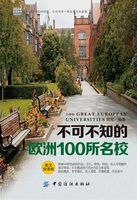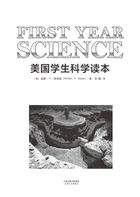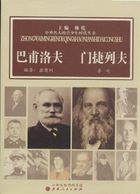【Introduction】
Contemporary examples of crowdsourcing abound. Examples of mass participation in the public sector often take the form of wikis. Similar in its function to the Mozilla Knowledge Base, DailyStrength.org is a health network of individuals sharing symptoms and treatment advice. WikiHow.com reports at its site that over 50,000 articles have been written and edited primarily by self-selected volunteers in the ongoing compilation of the world's largest how-to manual. For-profit and nonprofit organizations seek ideas from the wisdom of groups. Originally a Web site designed to crowdsource ideas for Web-based businesses, Cambrian House claims to collaborate with its 50,000 online members not only to source entrepreneurial ideas, but also to develop the best of those ideas into businesses.
Knowledge As Power, DemocracyLab, and Govit are examples of Web sites designed to increase public participation in governmental decision making. The city of San Diego, California, is experimenting with participatory budget drafting by asking -citizens to suggest money-saving measures.[68]Officials in federal agencies like the Transportation Security Administration (http://www.*****.com/?or services with the needs, lifestyles, and expertise of the public it serves.
Open source operates in the public eye as a public resource.
Open source as a process solicits the knowledge of individuals and groups with specific interests and expertise, making those individuals self-selecting because they can only volunteer their feedback on issues about which they are truly knowledgeable.
Open source as a process depends on modularity—the dividing of tasks into manageable and thematically or technically specific projects.
Open source requires an online structure—a set of protocols by which volunteer feedback is organized.
Open source as a managerial structure is most effective as a top-down, hierarchical organization, one in which leadership steers participation and makes final decisions.
With regard to this final point and the centrality of self-selection in an open source approach to governance, it is important to recall that Mozilla does at times recruit experts from its community to work on specific projects. Self-selection is not in opposition to the solicitation of experts. Self-selection occurs within a pool of like-minded individuals, who make up a subcommunity that is defined by a skill set.
【The Open Government Initiative: Whitehouse.gov Revisited】
As part of President Obama's Open Government Initiative, the new administration launched an online public consultation process designed to involve private citizens in the development of policies and practices that will increase transparency in governance, public participation in governmental decision making, and collaboration between inter- and intra-governmental agencies.[86]At whitehouse.gov, individuals were invited to participate in a three-phase process to aid the administration in the design and implementation of new protocols in open-government development.
The first phase, "Brainstorm,' asked self-selected participants to submit recommendations on how to make government more open, and to rate the recommendations of their peers. The second phase, "Discuss,' gave participants the opportunity to express their opinions on the many ideas captured in the first phase. The final phase, "Draft,' enabled participants to collaborate via a wiki in the drafting of "recommendations that translate good ideas and lofty principles into specific actions that can be taken to achieve open government.'[87]Specific topics included "Transparency Principles: Defining Transparency,' "Citizen Participation in Government Decision Making: Creating New Opportunities to Engage,' "Transparency Governance: Institutionalizing Transparency,' "Strengthening Civic Participation: Training People to Participate,' "Prizes: Creating Incentives for Public-Private Partnerships,' "New Technologies and Participation: Enabling Participation with New Media,' and "Online Public Participation in Agency Rulemaking/E-Rule- -making.' Whitehouse.gov highlights important aspects of the Mozilla model, as we apply it to government:
Volunteers are self-selected.
The process for participation is clearly defined.
Areas of inquiry were divided into categories (modules), maximizing the volunteers' ability to choose the subjects best suited to their experiences and skills, and thus to specialize.
Volunteer recommendations are rated by the community; peer review is central to the process. Participants are given the ability to flag peer recommendations that seem off topic.
Participants are given the ability to introduce new topics.
The concept of forking was realized through a wiki that allowed participants to borrow sentences from peers and, with attribution, incorporate them into their own recommendations.
Facilitators of the process published clear protocols—advice, recommendations—to volunteers on how to maximize the effectiveness of their contributions.
Facilitators published an explanation of how feedback would be used by those who make final decisions.
Final draft recommendations were reviewed by internal moderators, published for comment by the public, and circulated for interagency comment.
【Some Contemporary Examples of Collaborative Governance】
In considering Mozilla, a template begins to emerge that may in a few cases be identified as already at work in government. Faced with a crippling backlog of patent applications, the United States Patent and Trademark Office (USPTO) has in recent years instituted a pilot program known as Peer-to-Patent that, commensurate with Mozilla's crowdsourcing efforts, invites the public into the patent examination process.[88]Anyone can become a public reviewer by visiting the Peer-to-Patent Web site. Upon registering, public reviewers join teams akin to Mozilla's modules and contribute to the evaluation of inventions in their areas of knowledge. The expertise required to participate meaningfully in any one capacity creates a natural process of self-selection. Because public reviewers work in teams, they are responsible for vetting one another's contributions to the evaluation process. Individuals gain stature through the quality of their contributions, as determined via a formal rating system. Despite the established relevance of volunteer contributions, the final decisions on whether or not to grant a patent remains with the official patent examiner.[89]As with the Mozilla Project, the Peer-to-Patent pilot relies on technologists from around the country (and the world), who enthusiastically volunteer their expertise to the USPTO via the Internet. The entire program is online at peertopatent.org.
Similarly, the EPA crowdsources the expertise of private citizens by training them to monitor the quality of water in estuaries, lakes, streams, and wetlands in their local communities, and to report their findings to the appropriate public or private organizations.[90]The EPA educates potential volunteers about bioassessment by publishing fact sheets, monitoring methodologies, and resource guides at its Web site. Individuals join or start project groups in their communities by contacting project coordinators through the listserver known as "The Volmonitor.'[91]
The examples of Peer-to-Patent and the EPA's volunteer water-monitoring program share several characteristics with the Mozilla model:
The USPTO and EPA are tasked with solving complex problems that require interdisciplinary activities.
At both the USPTO and the EPA, the use of volunteer experts requires a more granular (or modular) and focused set of practices, so that it is possible to clearly define and recruit for the roles available to private citizens.
The USPTO and the EPA create group-based projects by connecting volunteers with each other.
Despite the use of networks of private citizens, government agencies are still responsible for coordinating policymaking, and must remain central to the decision-making process, while taking advantage of volunteer feedback at the periphery.
Both agencies solicit volunteers from a relatively unlimited and geographically dispersed pool of experts and enthusiasts.
While the number of people who potentially can participate in any one project is large, the number of people who do participate in a single project is small.
Volunteers choose what project they want to work on, and when they want to work on it.
A point of contrast between the EPA and both Mozilla and the USPTO concerns locale. Because the EPA's reach is national, it too benefits from federated participation. The work of volunteer water monitors takes place in the field. The EPA facilitates collaboration between small groups and regional organizations. As such, a geographically unlimited community may also be described from the point of view of a federal agency as a network of geographically delimited populations, a point that raises interesting questions about how the federal government might broker collaboration between private citizens and regional government agencies. How might federal agencies crowdsource expertise and assign that expertise to state and local programs? How might networks of delimited populations multiply opportunities for private citizens to participate in national service projects?
The example of volunteer bioassessment raises one more point of comparison between these organizations. Traditionally, aquatic biologists work alone or with an assistant. The assignment of groups of volunteers to bioassessment projects makes it possible for a federal or state agency to monitor many locations at once. Furthermore, volunteers tend to monitor waters where they live or vacation, so that they are regularly engaged in the task they have selected for themselves, and can in some cases monitor the health of a body of water over time.[92]This fact further captures an idea implicit in the motivations of volunteers involved with Mozilla and the USPTO: Programmers contribute code, technologists and hobbyists alike scrutinize patent applications, and environmentalists monitor watersheds because these activities construct their identities.
【The Obama Network after the Election】
In his blog posting on November 3, 2008, David Lazer, associate professor of public policy at Harvard's Kennedy School of Government, and director of the Program on Networked Governance, posed the question, "What happens to the Obama network after the election?'[93]On the eve of the election, Lazer estimated that there were an average of 4,000 active Obama supporters—what Joe Trippi would label Leaders—in each Congressional district in the United States. Other journalists and public intellectuals blogged about the use of the millions of people who volunteered to help the Obama campaign. The journalist Dan Froomkin called for a "Wiki White House':[94]
The goal should be to create a process whereby good ideas, relevant personal stories, informed opinions and perhaps even consensus on some issues can bubble up from the public. And while that may sound impossible, organizations like Wikipedia provide one model for handling vast quantities of user-submitted content with great if not perfect success. That model calls for a huge number of community volunteers working under the guidance of a small number of staffers. The White House is uniquely positioned to mobilize a small army of volunteers to monitor public comments should it choose that route.
A month after President Obama's inauguration, Blaser, Weinberger, and Trippi proposed a virtual network of the 435 U.S. Congressional districts.[95]Bringing the commentary of each of these critics to bear, the possibility of a Mozilla-like approach to participatory governance emerges.
In discussing the community of users dedicated to the Firefox browser, we saw that volunteer developers were variously active or, rather, that they became active when they identified problems that they felt qualified to work on. Despite the occasional nature of their participation, the fact that they would volunteer from time to time in the future meant the perpetuation of the project that defines their community. The classification of citizens according to which tier they occupy in the progression to political activist supports the notion that individuals choose when and how they will participate. Those who are most active—the Leaders at the top of the ladder, or the estimated 4,000 active Obama supporters in each of the 435 Congressional districts—are comparable to the most active programmers in the Mozilla development community; they are the module owners, peers, and committers. Imagine uniting their electoral counterparts under Froomkin's "Wiki White House.'
Earlier in this report, in discussing the EPA's effort to involve private citizens in the monitoring of watersheds in their local communities, we introduced the idea of federated participation, by which a federal agency may describe a geographically unlimited community as a network of geographically delimited populations. The EPA brokers collaboration between private citizens (working in small groups) and regional agencies. A virtual network of Congressional districts could begin with the federal, online coordination of volunteers in their districts.
【Potential Limitations of Crowdsourcing】
It is tempting to say that the potential of crowdsourcing is unlimited. Maybe the greatest challenge of this discussion is the identification of those instances where open source strategies such as crowdsourcing definitively cannot instruct government. This is true for at least two reasons: the proliferation of successful and/or novel crowdsourcing projects in both the public and private sectors and the fact that open source projects characteristically are experimental.
Any theory of open government raises questions about representation and inclusiveness. One could argue that a ranking system used by participants to vote community contributions up or down could be exploited to give undue influence to a few well-organized participants. Rating and ranking systems of citizen input may in some cases deny individuals the right to participate. Group-based participation systems, while potentially more manageable and useful, could also impede the individual First Amendment right to participate. For example, an individual who wishes to submit a piece of prior art to the Peer-to-Patent pilot, and has that submission rated down by the crowd, may feel that she has been denied her right to participate in the evaluation of a patent application. Of course, the integrity of such a complaint would depend on when the participation process was understood to have started: participation may be the right to introduce a proposal and have that proposal reviewed by peers. Continued participation may be contingent on the outcome of such peer review.
Another limitation is conceivable. Advocates and enthusiasts working in relatively esoteric areas of national interest might find that their issues are always ranked below headline-grabbing topics. On January 13, 2009, an individual who was monitoring the CBB during the comment period posted the following message on the blog at nasawatch.com:
Right now there are a few[posts] regarding NASA and space exploration but not enough votes to rise to the top. I just wanted to let you know about this with hopes that you would make a post about it. Your website reaches a large pro-space audience and maybe with that kind of exposure the space exploration ideas will have a chance to reach our President-elect.[96]
This citizen's concerns are real and reasonable. At the same time, the CBB inspired her or him to take action and draw attention to the issue of space in another forum. This blog posting supports the open source idea that effective public deliberation is not relegated by a controlling interest, but can spread virally to many forums, potentially inspiring new issue-centric advocacy groups.
Another possible side effect of increased public participation in governmental decision making is the potential rise in lawsuits known as SLAPPs (Strategic Lawsuits Against Public Participation). A SLAPP is usually a civil complaint or a counterclaim filed against someone who is critical of the plaintiff's enterprise. Though such lawsuits rarely are legally successful, they can be effective in silencing critics by encumbering them with legal expenses. For instance, a real estate developer might claim that a petition signatory aligned against his project was interfering with his contract. When such SLAPPs are brought against individuals who have participated in government crowdsourcing projects, it is known as crowdslapping.[97]
One final unknown with regard to crowdsourcing has to do with the unintended consequences of mobilizing a crowd. In 2008, the state of Texas set up a network of Internet cameras so that the general public could monitor the border with Mexico for illegal aliens and report suspicious activity to local authorities. This is a clear example of crowdsourcing.[98]The use of the Internet in mobilizing people against people may have unforeseen consequences, such as vigilantism.
【Transparency: Toward Open Source Governance】
The creation of an online forum, and ultimately the formation of a recursive public, begins with an organization's open call to a large, undefined group. An emergent, self-organizing public need not be defined by geography or proximity, but it will always coalesce around shared interests. In the abstract, the Mozilla model of participatory governance requires that government crowdsources expertise in the creation of passionate, self-organizing groups that represent the interests of larger constituencies. Government inspires private citizens to participate by creating a system that connects a small group with a government agency that, with the aid public feedback, is working to solve a specific problem.
The rise of participatory governance is predicated on the political concept of transparency. Openness equals transparency. The work of government must be made public if participation is to ensue. In concluding our discussion of Mozilla and the applicability of its open source practices to government, we ask the following question: Who makes transparency happen? We end with this question because transparency as a responsibility shared by the public and private sectors is the basis—the genesis—of public participation in governmental decision making.
In a panel discussion on January 9, 2009, at the Google headquarters in Washington, DC, Ellen Miller, executive director of the Sunlight Foundation, stated, "Transparency is government's responsibility.'[99]A partial timeline of the legislative history of public transparency in the United States—beginning with the formation of the Government Accountability Office in 1921, and continuing with Administrative Procedure Act of 1946, the passage of the Freedom of Information Act in 1966 (and its subsequent amendments in 1996, 2002, and 2007), the Government Performance Results Act of 1993, the Government in the Sunshine Act of 1994, and the Federal Funding Accountability and Transparency Act of 2006—helps to narrate the history of Congress working to fulfill its responsibility of transparency. Laws such as the Clinger-Cohen Act (The Information Technology Management Reform Act of 1996), the 2001 Information Quality Act, and the e-Government Act of 2002 place public accessibility to information in the context of technology in the Internet Age. Beyond legislation, regulations that are open for public comment and final rules are available at the regulations.gov Web site. Today, President Obama's agenda is published at whitehouse.gov.
In a book called Full Disclosure: The Perils and Promise of Transparency, authors Archon Fung, Mary Graham, and David Weil describe another government strategy to increase public awareness of a variety of issues, including corporate and campaign finance, product safety, toxicity levels in drinking water, school performance, and terrorism-threat levels. "Targeted transparency' is the publication by the government of factual information about the social, commercial, and political interests that most affect the lives of private citizens.[100]Writing about Full Disclosure for The American Prospect, Professor Paul Starr situated this concept in another loose timeline in the history of public transparency:
The first-generation transparency policies of the 1960s and '70s—right-to-know laws, such as the Freedom of Information Act—gave the public access to previously restricted data and documents. Targeted transparency policies enacted in the '80s and after went a step further by requiring business and government to disclose standardized forms of information relevant to organizational performance. More recently, a third generation of efforts has emerged that the authors call "technology-enabled collaborative transparency.' Instead of passively receiving information, consumers and the public can now actively create it by pooling their own data and experience. And in contrast to the relatively inflexible and slow systems created under targeted transparency laws, the new approach uses computers and the Internet to provide real-time information that individuals can customize for their own use.[101]
Culminating with the rise of "technology-enabled collaborative transparency,' this chronology approaches but does not encapsulate the extent to which collaborative transparency has required collaboration between government and private citizens. There are two reasons why. First, the collaboration entailed in technology-enabled collaborative transparency is neither top-down nor bottom-up—the terms hardly apply—as it is not in service of any particular organization or agency. The collaborators are the crowd. The roles they may play are not defined and aggregated in a process developed to realize the goals of a larger organization. In contrast, Mozilla, like a government, is the centralizing authority of its enterprise. Mozilla offers individuals a variety of ways to participate. It puts people into collaboration with each other in the maintenance of its public's assets.
To understand the second reason that Mozilla represents a somewhat different strain of transparency as an approach to engendering participation, we return to Ellen Miller's position that transparency is the responsibility of government. Whether or not this is true, an accurate history of public participation in the United States depends on the contributions of organizations from outside of government that we may call participation brokers—organizations that act as intermediaries between government and its constituencies.
With regard to the specific issue of transparency, there are many examples of such brokers. Dedicated to voter services, citizen education, and "an open governmental system that is representative, accountable and responsive,' the League of Women Voters was founded by Carrie Chapman Catt in 1920, months before the passage of the Nineteenth Amendment.[102]Serving as the Washington, DC bureau chief for a cable industry trade journal, Brian Lamb founded C-SPAN in 1979.[103]C-SPAN put Congress on TV. In 2006, Ellen Miller and attorney Michael Klein founded The Sunlight Foundation as a 501(c)(3) educational organization. The foundation hosts an interactive blog, links to open source coders dedicated to software projects that increase the transparency of government, and links to online databases that publish government data in useable formats.[104]In 2008, with the aid of a grant from the Sunlight Foundation, Sarah Schacht founded Knowledge As Power (KAP), an organization that, among other things, tracks legislation in the state of Washington.[105]
Each of these organizations aims to increase civic engagement through citizen education. Their collective purpose is so obvious and so aligned with government's supposed responsibility of transparency that one would think they were the innovations of government. One can imagine—maybe somewhat idealistically—the U.S. House of Representatives coming up with the idea of turning on the TV cameras. Equally idealistic but not utopic, one can imagine the federal government setting up KAP-like agencies in every state. (The work of NGOs such as Knowledge As Power further suggests the potential of the federal government to broker collaboration between private citizens and regional government agencies. The most active volunteers in each district could coordinate the publication of federal legislation on a state-by-state basis, an idea that approximates the independent but coordinated efforts of user groups in the Mozilla model.)
Though not exclusively an example of transparency, Peer-to-Patent is unique as an example of participation brokering because the broker, New York Law School, is an NGO that by way of peertopatent.org enlists private citizens (to form small, task-oriented groups) to participate in the work of government. Peer-to-Patent has proven to be such a worthy experiment that one wonders if the USPTO will ever cut out the middleman, and bring the program in-house. If it did, it would be internalizing a structure of hierarchical management that relies on collaborative, volunteer participation. The point here is not (yet) that the USPTO should take over the reins of the Peer-to-Patent pilot, or that Congress should necessarily found regional, KAP-like agencies. The point is that the responsibility of transparency is shared.
We see this shared sense of responsibility in the relationship between Mozilla.org and Mozdev.org, through which the Mozdev Community Organization brokers participation between volunteer programmers and Mozilla.org by hosting projects. New York Law School mirrors this relationship by (again) soliciting the expertise of volunteers in the examination of patent applications.
【In Conclusion: Mozilla for Government】
I
Mozilla organizes large-scale participation in the development of its software. The scope of participation is not captured by the total number of people working on Mozilla's overall mission, but rather, in the aggregation of a large number of small groups dedicated to many projects under the Mozilla banner. Development of the Firefox browser is organized under a module ownership system. Each module is governed by a system of hierarchical meritocracy. Each group houses its own hierarchy. Like profit centers in traditional corporations, each group or module operates as its own innovation center.
It follows that a large-scale poll like the one conducted under the auspices of the Citizens Briefing Book would be useful in identifying the issues to which private citizens pay the most attention. That said, an open source infrastructure is most effective when designed to manage public input on module- or agency-specific topics. Environmentally sound gardening techniques are not the purview of the White House, whereas the EPA is dedicated to increasing public awareness of green practices in the home and in public places. We see the abstract nature of the CBB in the scores of specific issues—from aerospace to the patent system—that were not represented.
Once a government agency like the EPA or the USPTO sets up an online infrastructure for public participation, it can work conscientiously with individuals in communities that are defined by skill sets. The door will also open to collaboration with industry-specific organizations. The assigning of tasks to self-organizing groups helps Mozilla improve its product, build market share, and educate the general public about its core mission. As articulated in the Mozilla Manifesto, that mission is as altruistic as it is commercial. The Mozilla community promotes a product and an experience, which perpetuates a sense of cohesion in a geographically dispersed population that is united by a shared sense of mission.
II
Open source participants are identified on the basis of their roles in a system of distributed peer review. From the top down, that hierarchy (in the Mozilla model) includes the module owner, the module owner's immediate peers, committers, and FLOSS developers from outside and within Mozilla proper. With the rare exception of individuals who are both employed by Mozilla and active in the development of a module, each of these roles is voluntary. The success of the module ownership system depends on the following concepts:
People must know they have the option to participate.
Participants choose their tasks. Based on their expertise and enthusiasm, they choose what they want to do, when they want to do it.
Individuals are self-selected into self-organizing groups.
Not everyone is involved all the time.
The ratio of active participants to the total population of a community may be small.
Participants may discover new roles as they acclimate to the community.
Final decisions are made leaders—module owners, elected officials, editors, etc.
Each of these points is applicable to government. We see such organization in the examples of the USTPO and the EPA. Not everyone is paying attention to the health and wellbeing of watersheds. But there are those who are, just as there are those who have an interest in the innovations in their industries under review by the USTPO. Where participation is mutually beneficial to the organization, the volunteer, and the volunteer's community, there is a greater likelihood of engagement. The benefits of collaboration to Mozilla are clear: the input of proportionately small, self-selected groups makes public participation manageable.
The motivations of the volunteer are manifest in a variety of dichotomies: personal/professional, individual/civic, psychological/sociological. Participants are motivated by personal enrichment and a sense of community. That the Mozilla experience engenders civic-mindedness and, at the same time, opportunities for individuals to improve the technology they use in their everyday lives makes the Mozilla Project applicable to our understanding of the stated and implied goals of governmental agencies. Though government is not expressly in the business of product development and marketing, it does manage enterprises and offer services that are relevant to the everyday lives of citizens and may be improved through the feedback of constituencies that are meant to benefit from these services. Furthermore, government seeks to develop new programs based on the needs of the governed.
III
If government is to successfully proliferate its current services and innovate new policies, it may do so by collaborating with private citizens. While in the abstract the Internet enables geographically distributed communities to cohere around a common cause or interest, infrastructure is necessary for people working across a distance to become a community. With regard to this assertion, the Mozilla model makes the following points:
Having a well-designed system by which individuals can contribute to the shared work of the group is essential to forging a recursive public.
Such a system must be able to evolve.
Without the ability to manage volunteer contributions online, an organization can ill afford to support public participation.
Networked governance is organized with Web pages.
Networked governance through Web pages provides group-based structures for collaboration on the Internet.
The Mozilla CVS provides the necessary technological architecture to support the community in its distributed work. Mozilla.org not only is the home of the source code repository, but also is a portal to other technical and nontechnical segments of the overall project, many of which operate as discrete Web sites. Through these Web sites, Mozilla extends the open source idea beyond programming. Firefox's user community helps with marketing campaigns at spreadfirefox.com. The Mozilla Knowledge Base, a community-maintained (wiki) user manual, is online at support.mozilla.com.
IV
The collaboration between Mozilla and networked publics is governed through the licensing of intellectual property. An open source license creates recursion by guaranteeing the individual the use of licensed resources in his own innovations, in return for access to those innovations. Though the relevance of licensing to governance is subtle, an open source license does reflect two concepts crucial to the concept of innovation as a collaborative exercise: forking, by which a new project is created on the basis of an existing project, with or without the foreknowledge of the licensor; and portability, which ensures that an effective tool can be used "as is' for applications other than the one for which it was originally designed. The significance of these practices cannot be overstated in our understanding of Mozilla's success, as they allow an individual to choose the work she wants to do, when she wants do it, without her needing to be commissioned or sanctioned by Mozilla. This fact makes possible more aspects of the Mozilla model of gover-- nance:
Open source licensing formalizes the relationship between an organization and its constituency.
Open source licensing formalizes decentralized participation and what in many instances we may think of as blind collaboration. (Mozilla need not know that a developer is working to improve the Firefox browser until that improvement is submitted for review.)[106]
Because licensing makes possible decentralized participation, it helps to create a culture in which experimentation is rewarded and failure is tolerated.
This final point merits elaboration, as its ramifications for government are profound. Under a system of hierarchical meritocracy, voluntary contributions are induced and, when cogent, rewarded. The volunteer—the citizen or the "netizen'—incurs opportunity costs—experiments, succeeds, fails—and advances in the cybercommunity based on the usefulness of his contributions. His independence offsets the risks of innovation faced by the organization with which he means to collaborate. He experiments prior to peer review. Whether or not the original organization implements his innovation, he is free to use it himself, and to distribute it. Likewise:
Participatory governance connects an organization with its constituency.
Participatory governance inspires innovation beyond its own agenda, in part by putting constituents into contact with other constituents, without the chaperoning of the government agency.
V
An understanding of the term netizen begins to articulate what is quietly revolutionary about this system. A netizen is someone who is actively involved in online communities.[107]He or she is actively concerned with the health of the Internet: Is it free? Is it open? Is it available to everyone? How do we measure? He or she uses such online tools and forums as blogs, chat rooms, file sharing, and wikis to join virtual networks. Because of the centrality of technology in their everyday lives, netizens are very familiar with the use of these same technologies by political candidates and their campaigns. To use these communications technologies to follow and to some degree contribute to a campaign, a cause, or an idea in these times of cybercampaigning and virtual networks is to be self-politicizing.
The problem that arises is an old one, known by the term digital divide. Netizens, generally speaking, have the skills and resources to participate in online governance. In defining the digital divide, identifying these skills and resources as a way of differentiating netizens from individuals who cannot easily participate in online communities is difficult. Most basically, the term is used to compare netizens to individuals who do not have access to a computer and/or the Internet. Here, the digital divide may also suggest a gap between those who have access to broadband and those who do not. Defining the problem becomes increasingly complex when barriers to Internet access are associated with societal problems like poverty. The question is an obvious one: how does a system of collaborative governance that is dependent on its participants' use of technology include those individuals who are disenfranchised because they lack that technology?
Though an investigation of all of the factors that may contribute to a comprehensive understanding of the digital divide is beyond the scope of this report, it is relevant to return to some of the original motivations of early, open source activists. As described at the beginning of this report, the FSF—the organization inspired by Richard Stallman's GNU Project—contextualizes free software as the freedoms "to study how the program works, and adapt it to your needs'; "to redistribute[software] so you can help your neighbor'; and "to improve the program, and release your improvements (and modified versions in general) to the public, so that the whole community benefits.'[108]As the FSF definition of free software goes on to state, "access to the source code is a precondition for this,' just as access to the Internet is a precondition to the Mozilla Project's powerful conviction that "individuals must have the ability to shape their own experiences on the Internet'[109]—a tenet that has led individuals to translate online text into their native languages and individuals with disabilities to make meaningful suggestions as to how best the Mozilla Project may accommodate them in their use of the Firefox Web browser. Though these values cannot thoroughly address challenges posed by the digital divide, they do promote an ethos of participation that extends the open source concept beyond software to collaborative governance.
In sum, government is meant to enable everyone to participate equally. The Mozilla model of governance allocates responsibility based on an individual's contribution. A contributor is empowered through his ability to exploit the opportunity to participate. This calls into question our most fundamental assumptions about equality. In the Mozilla model, the administration of pure equality, where each contribution is given equal weight, is inconceivable. Nonhierarchical collaboration is inconsistent with productivity. The assignment of tasks based on comparative advantage among individuals—and reputation derived from merit—makes mass participation manageable. Mozilla's contribution to our understanding of democracy stems from the fact that the work it invites volunteers to undertake is various. Not everyone can do everything effectively. But the extension of community-based approaches to problem solving to more areas makes participatory governance increasingly interdisciplinary and, as such, promotes inclusivity.
VI
Though we demand of our government that it be transparent and accountable, a history of political and civic life in the United States reminds us that transparency sometimes requires an NGO-brokered relationship between private citizens and government. Netizens are predisposed to collaboration with the online organizations that strive to connect people and government. They are well positioned to receive government services via the media of Web sites and social networking tools. For an increasing number of people open source spreads collaboration beyond its own agenda (forking and portability), suggesting the potential for open government to create opportunities for civic engagement in direct alignment with—and beyond—its own agenda. It is for this reason that we may ask not only what software has to teach government, but also what open source has to teach private citizens who, through participation, want to foster greater transparency and accountability on the part of government. Every opportunity that Mozilla offers individuals to collaborate on a project is only as good as the willingness of those individuals, even if only a few at a time, to accept that offer and contribute both their time and knowledge as they see fit.














